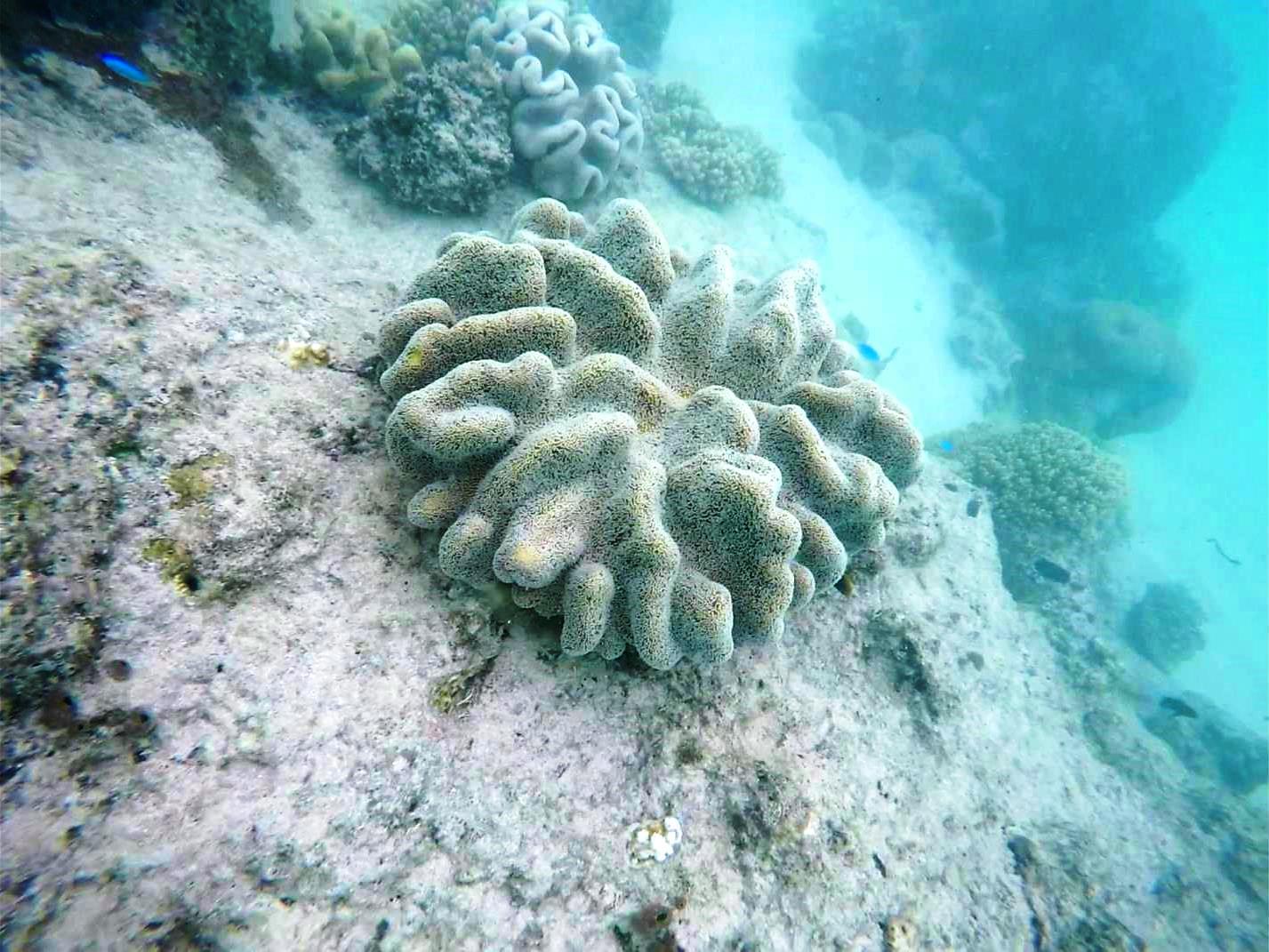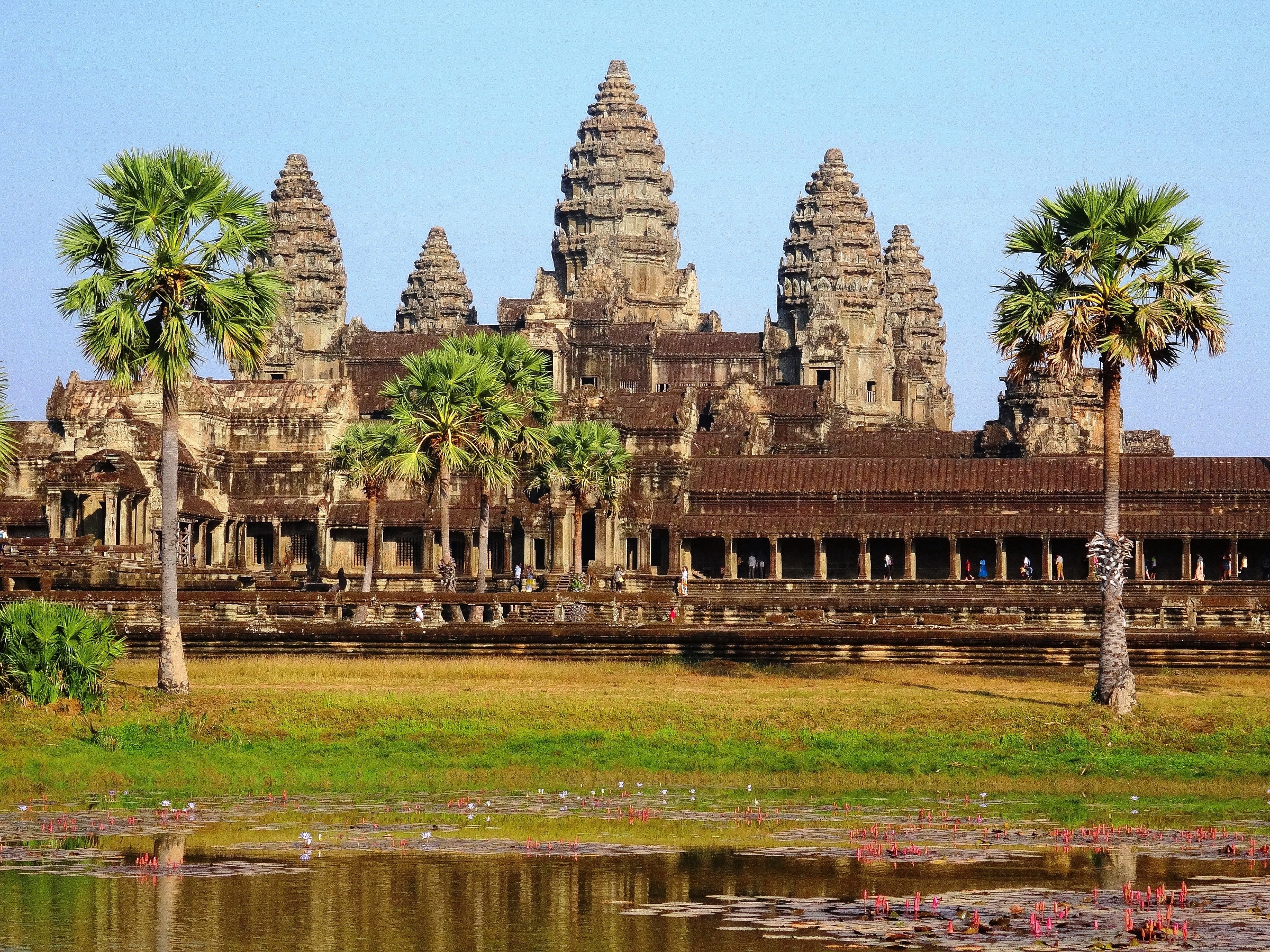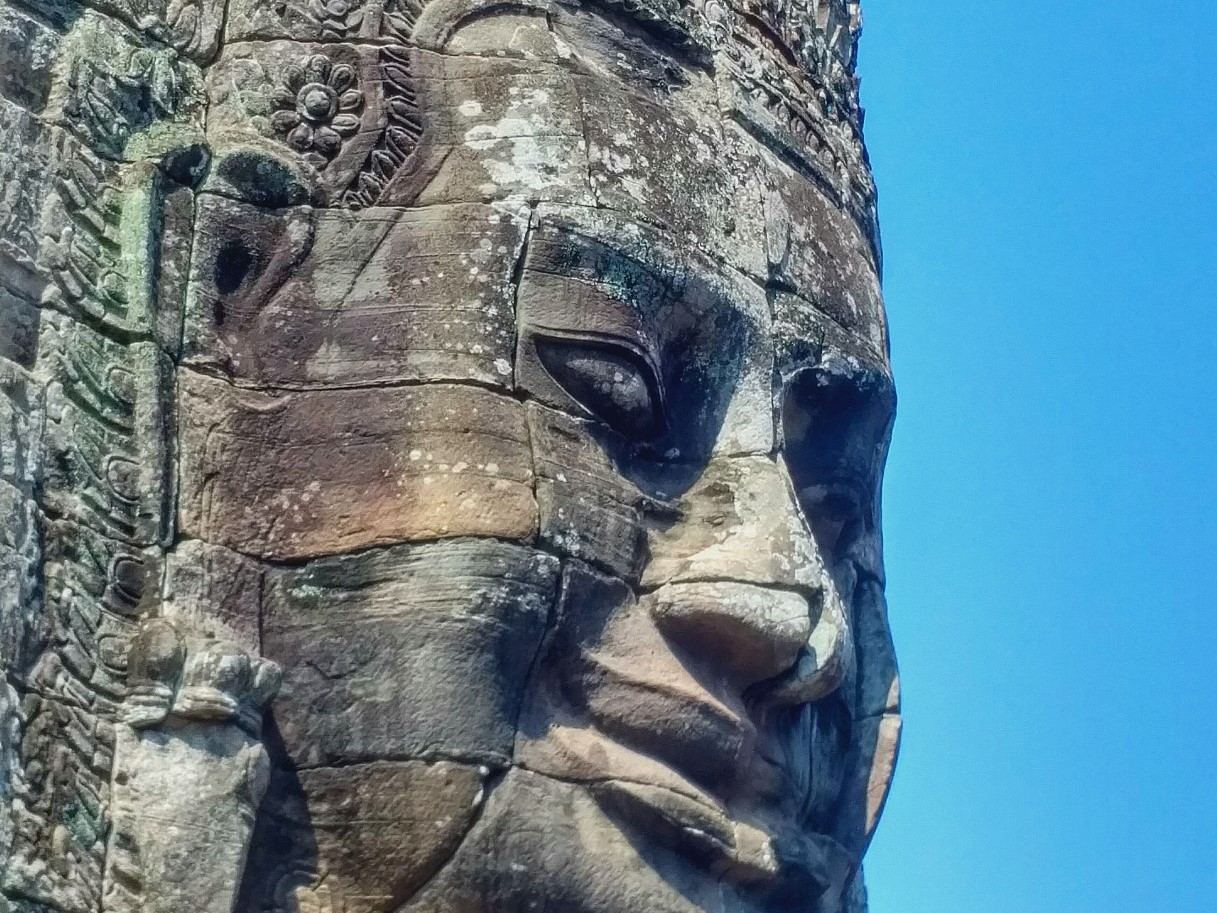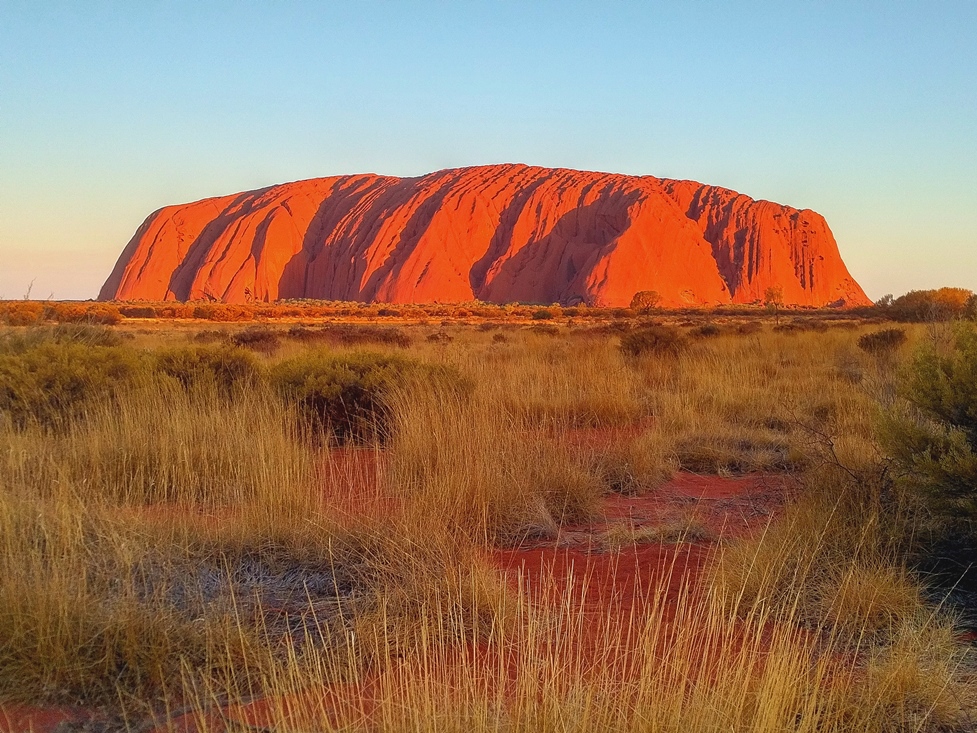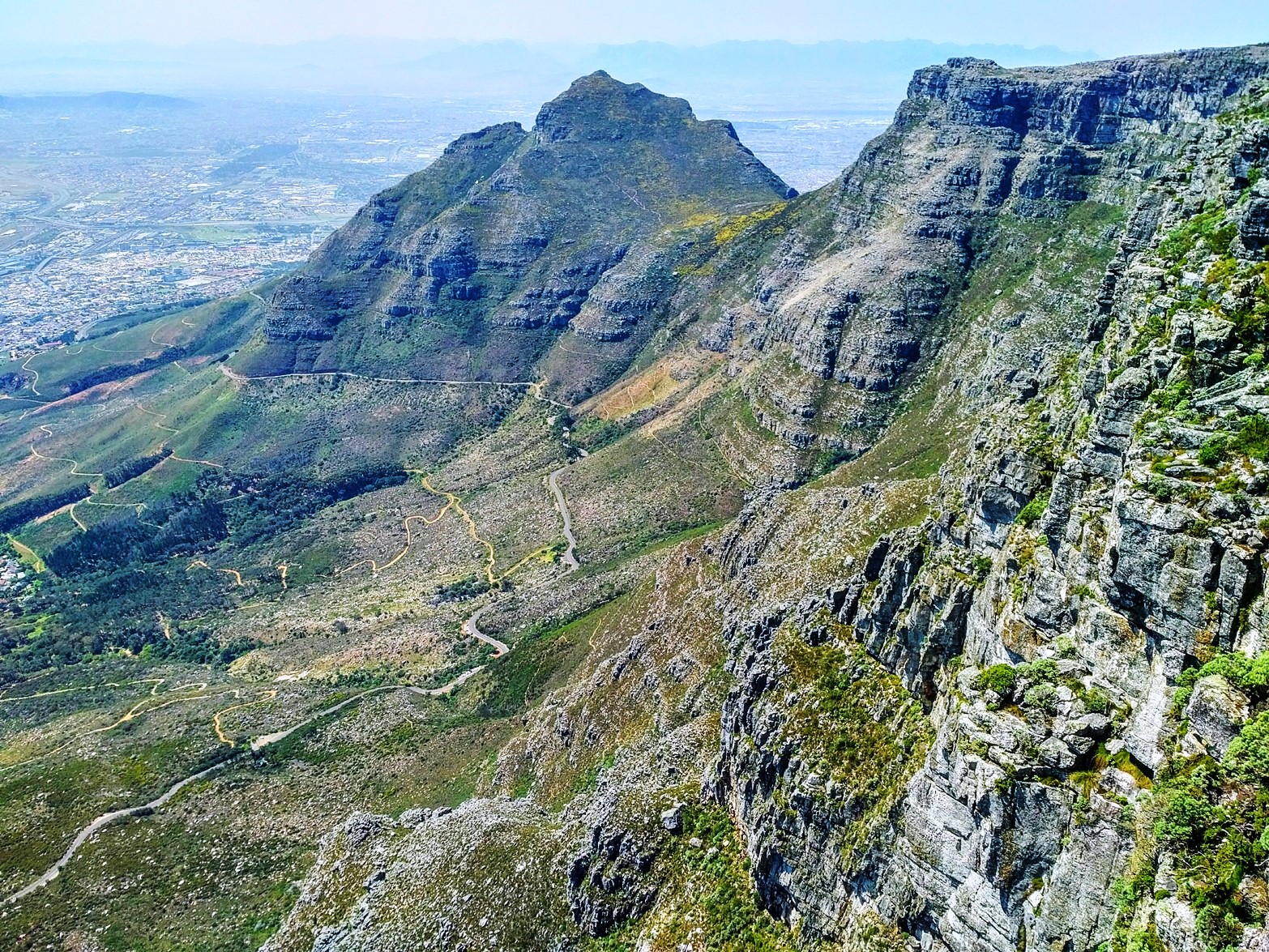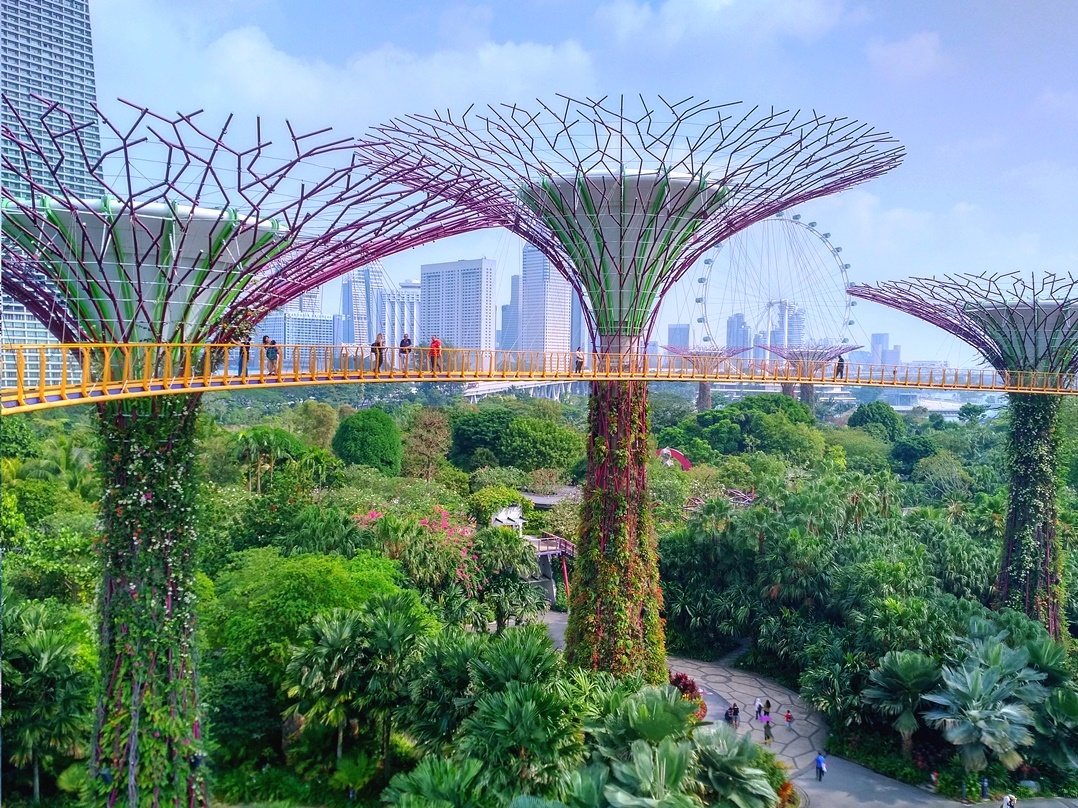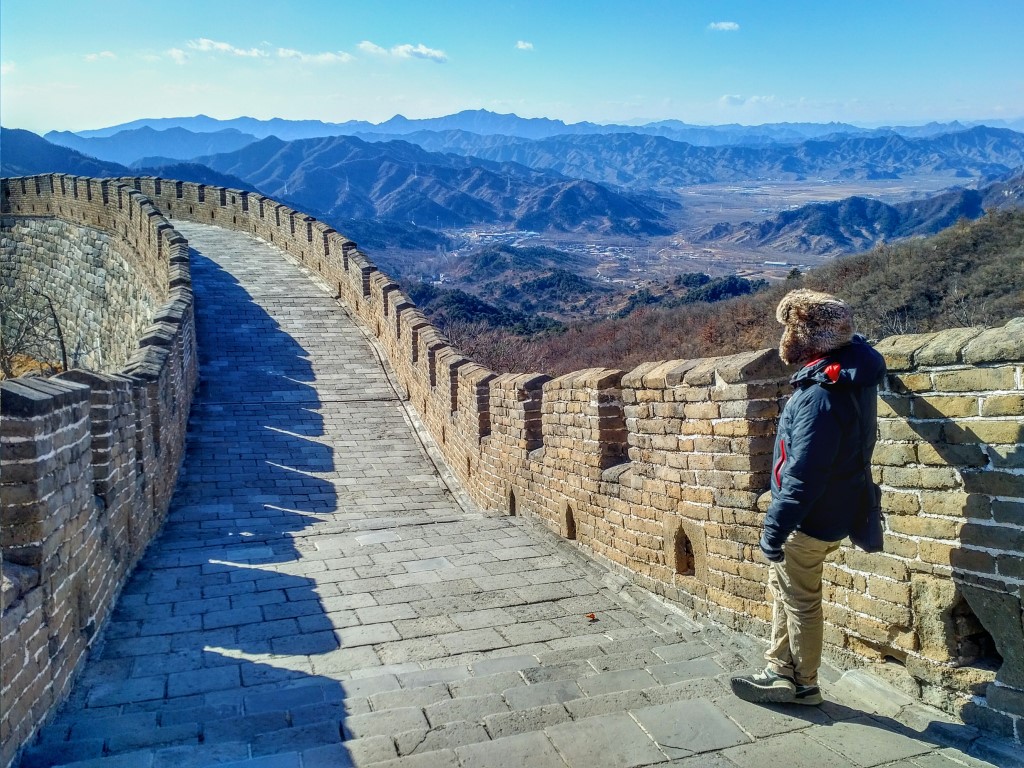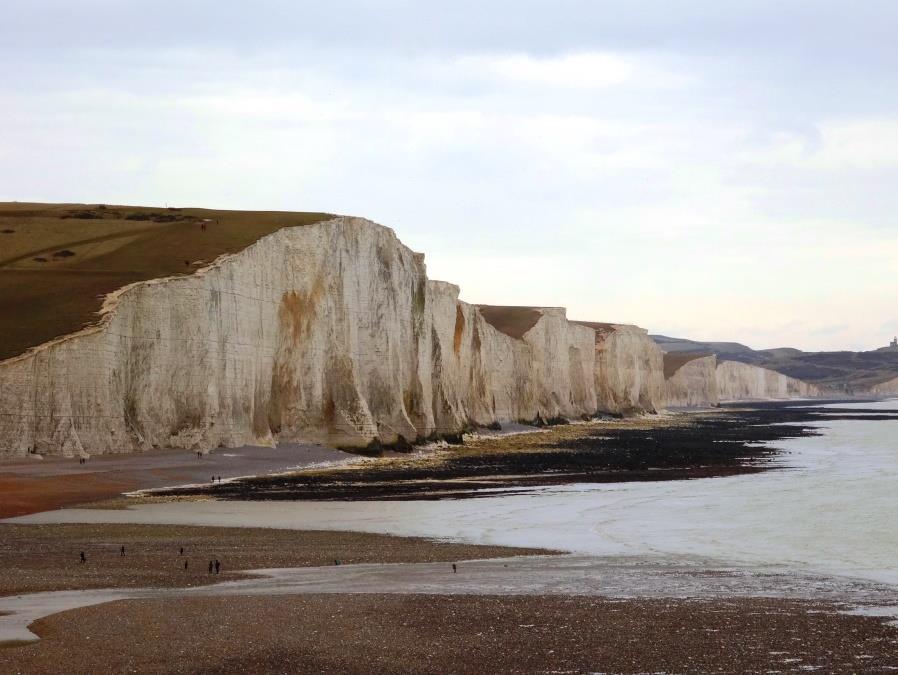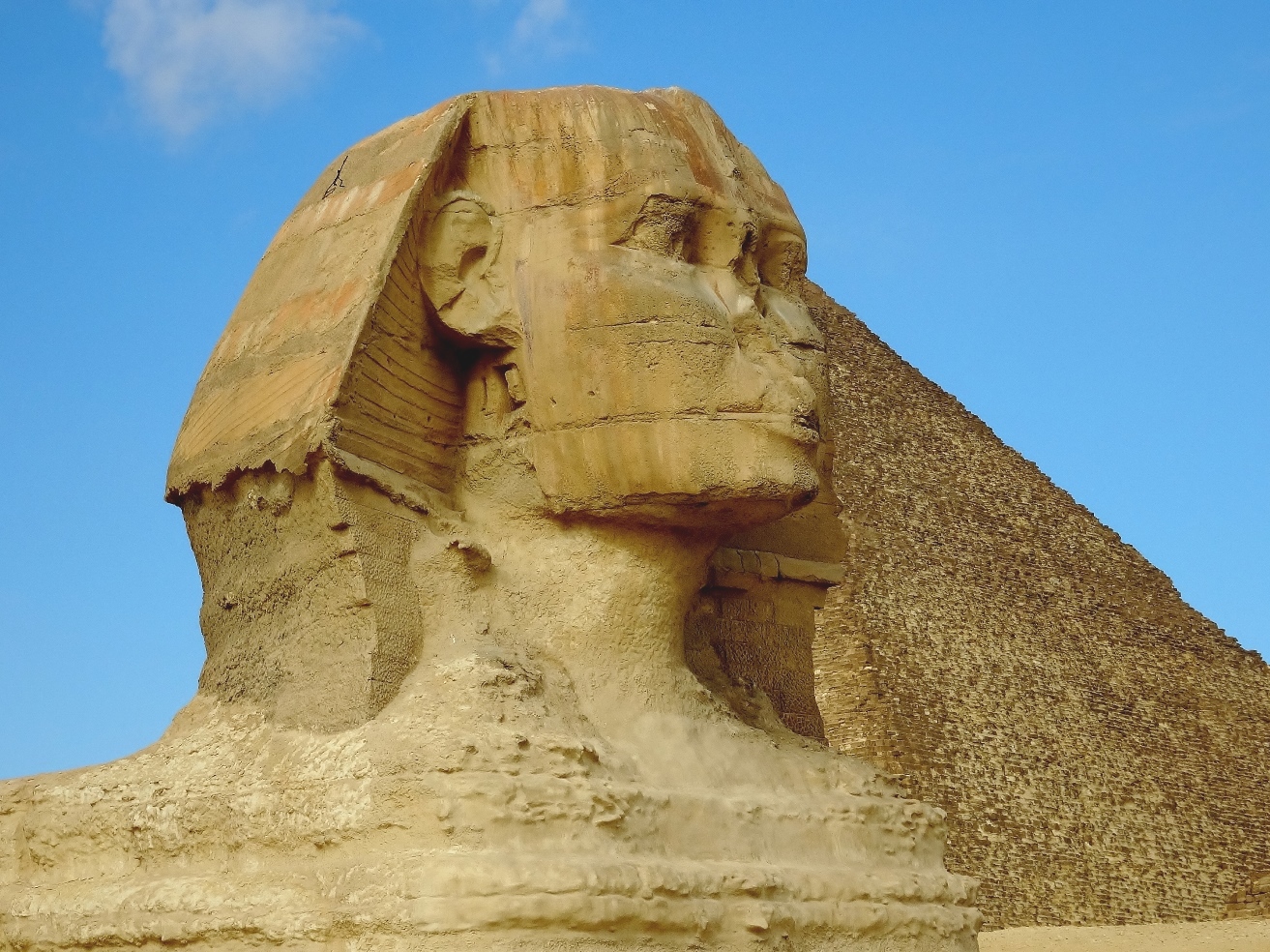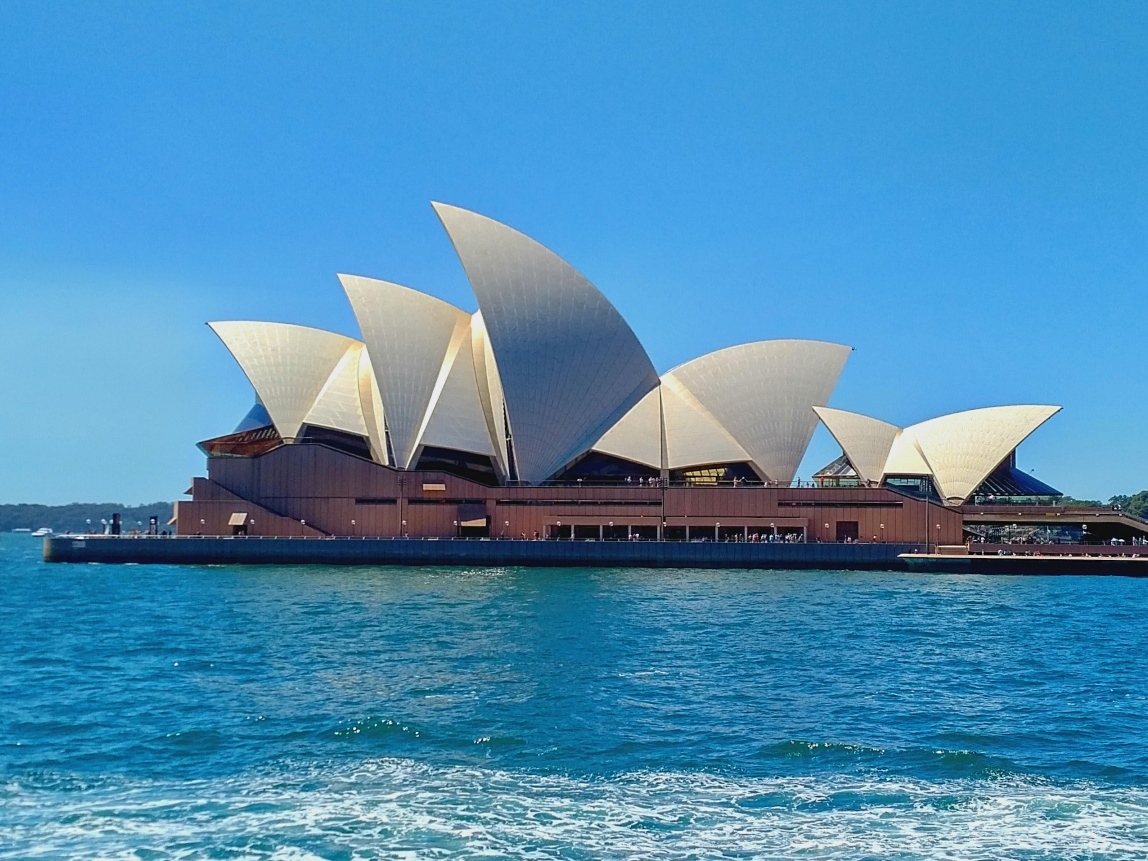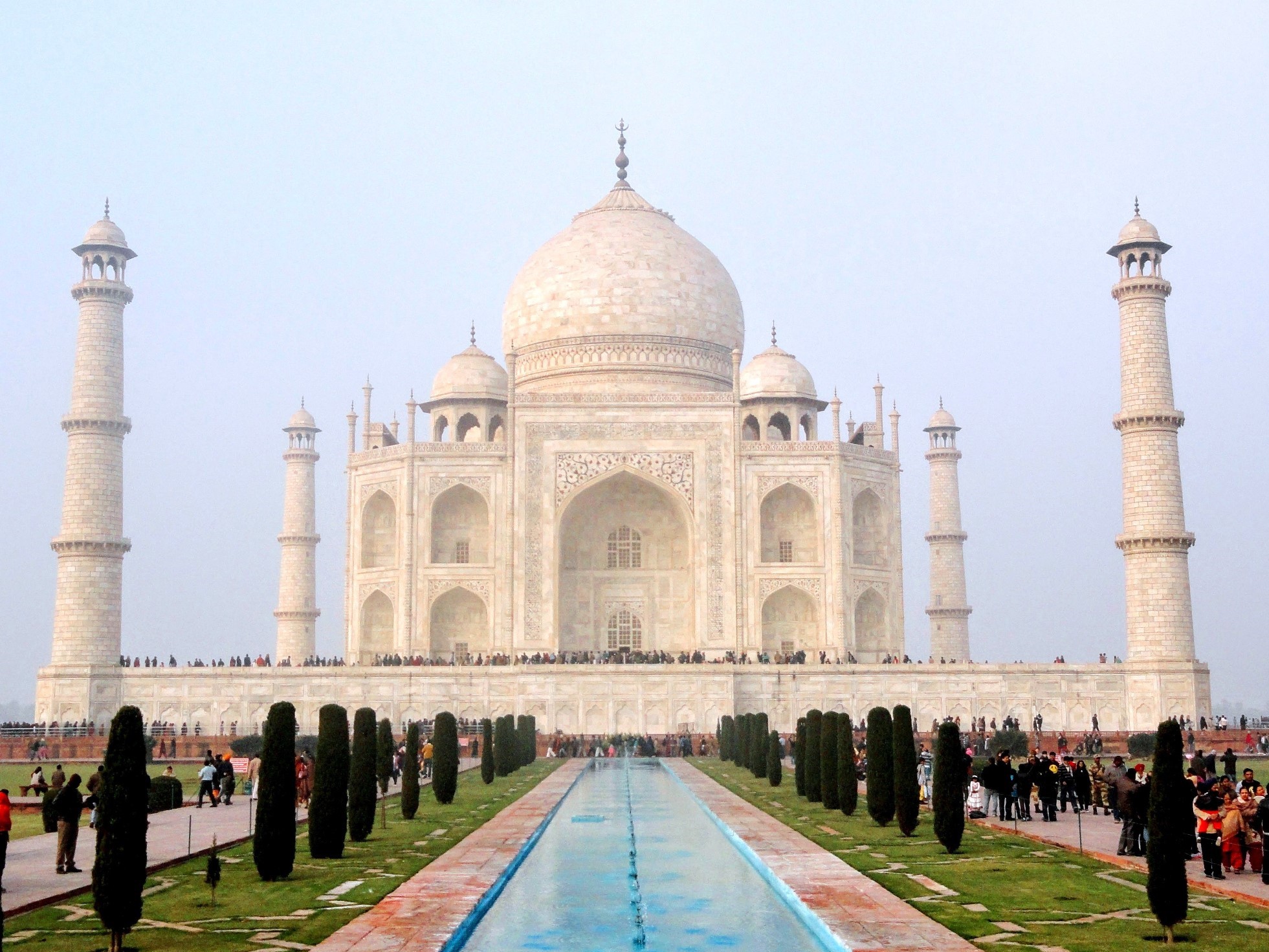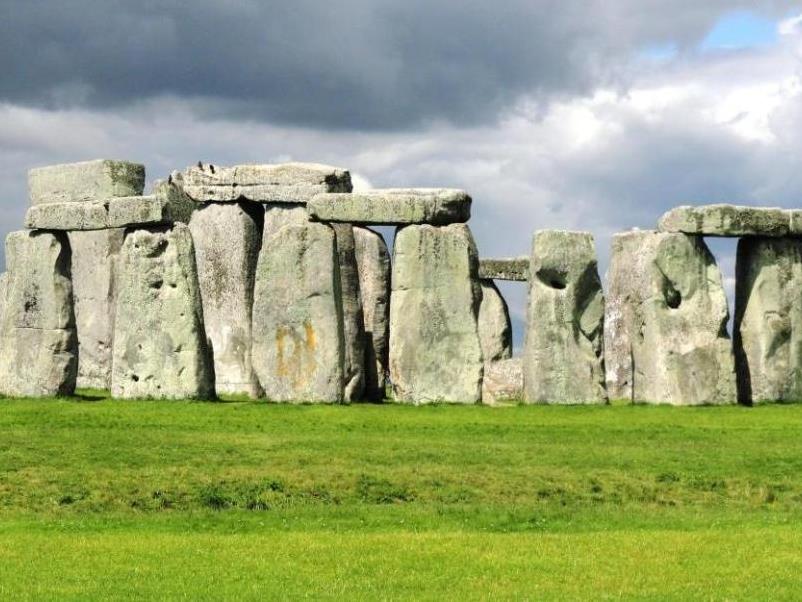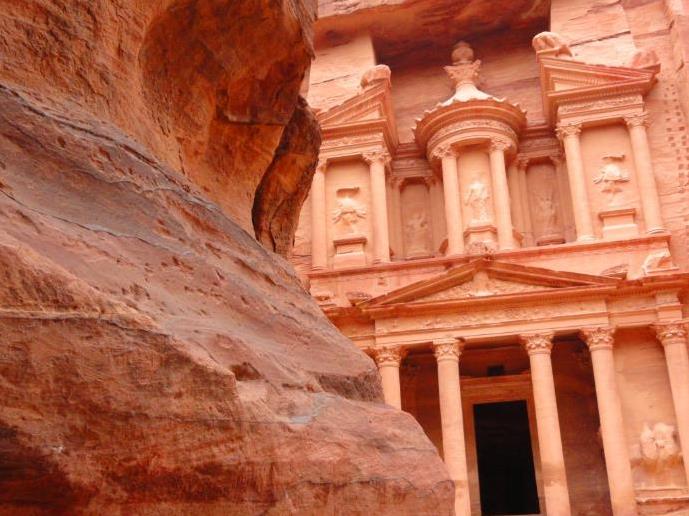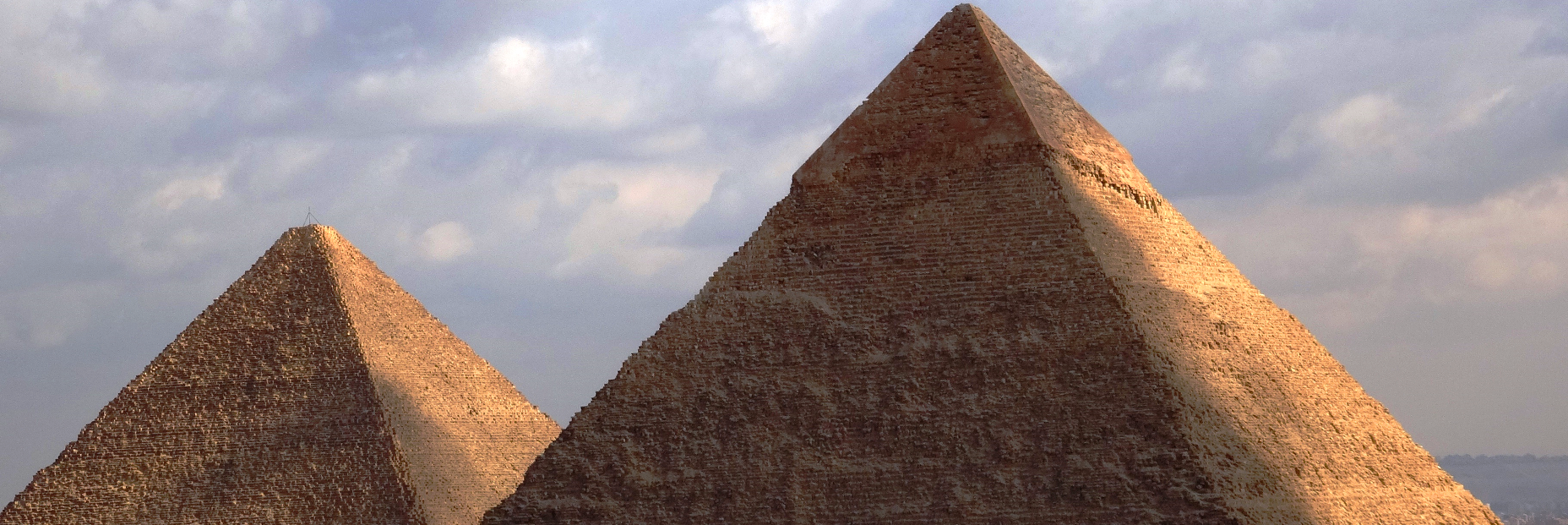
the world wonders blog
It's only when you've seen the globe's most famous sights that you can truly say you've travelled the world. I'm lucky enough to have photographed some of the world's most iconic. From pavilions to pagodas, great walls to great pyramids, cathedrals to coral reefs and opera houses to orang-utans, The World Wonders Blog chronicles my ongoing quest to photograph the wonders of the world.
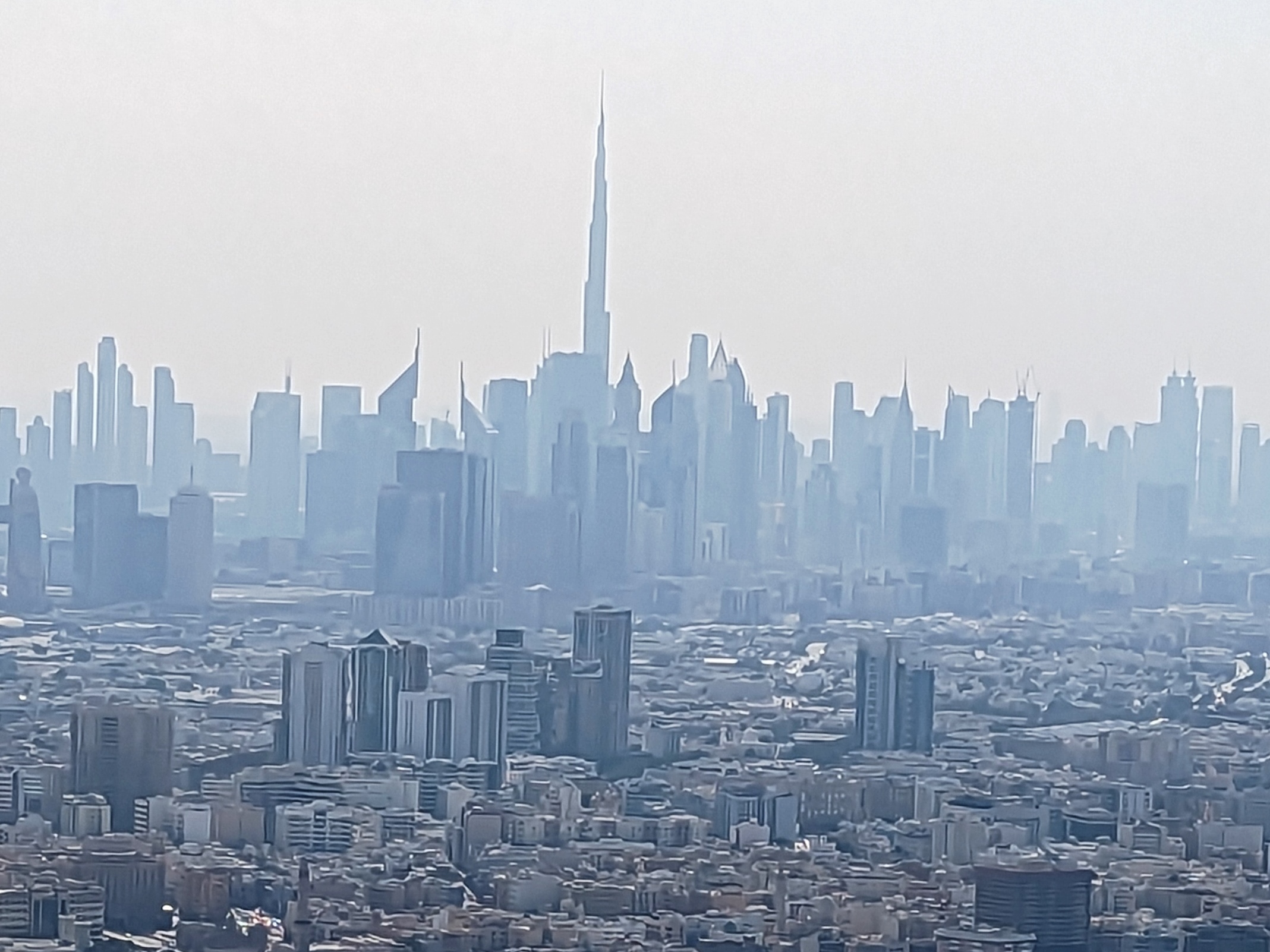
the burj khalifa
Dubai, United Arab Emirates, December 2022
Can I claim to have seen Dubai's Burj Khalifa if I watched it hone into view from my airplane seat as I finished my 14-hour flight from Sydney to Dubai? In a literal sense I have, of course, 'seen' the world's tallest building but, in travel writing terms 'seen' implicitly means 'visited', 'been inside', 'experienced'. There was an opportunity for me to stop off in Dubai on my return journey but, to be honest, I struggle to get excited about Dubai because, simply, I know what I am going to get: glitz and skyscrapers all enveloped in a dusty heat and suffocating conservatism. I've done it all before. Having been to the capital of the United Arab Emirates, Abu Dhabi, already I felt there was little to gain from visiting Dubai and adding a whole 24 hours on to my journey back to Sydney from the United Kingdom. And so this photograph, snapped from my window seat on board the Emirates flight coming into land, is likely the closest I will get to 'seeing' the Burj Khalifa. Its inclusion on my World Wonders page may be a little controversial - or not. You decide.
the great barrier reef
Queensland, Australia, April 2022
The famous Great Barrier Reef - one of the 7 Natural Wonders of the World. Admittedly, it had been quite some time since I last went snorkelling. I'm no novice having had the pleasure in Vanuatu, Fiji and Oman. However, on jumping into the sea with my snorkel gear attached, I immediately drew the attention of one of the crew who came to rescue me with a life buoy: embarrassing in retrospect but I was glad of his assistance at the time. It seems that the cold of the water (even with my anti-Stinger wetsuit on), plus the need to breathe through my mouth rather than my nose, was a little too much for me to co-ordinate on first entering the water. Still, it wasn't long before I was happily snorkelling over coral filming the fish in their underwater world as I went. A second snorkel in the afternoon at an alternative spot, Upolu Cay Reef, offered an enhanced view of the watery world; water levels had dropped and winds, which had stirred up the sea bed earlier on in the day, had eased. This was where I was able to behold this watery place in all its colourful otherworldly majesty. This most famous of travel experiences was marred only slightly by a leaky snorkel mask which kept letting salt water up my nose and into my eyes. The mild irritation I felt at the failure of my snorkel equipment evaporated in the knowledge that I was enjoying one of the 7 Wonders of the Natural World and one of the most famous experiences in world travel. I arrived back in Cairns at dusk, my body exhausted but my heart filled with a sense of achievement.
Click the photograph above to be taken to the full Travel Chronicle.
angkor wat
Siem Reap, Cambodia, December 2019
Siem Reap has long been a fixture of the backpacker scene. The Temples of Angkor are almost solely responsible for this footfall and as night follows day Siem Reap has developed and expanded to cater for the needs of travellers. With a quick foray to purchase a three day Temples ticket and a largely unsuccessful attempt to see Angkor Wat at sunset, that was day one in Cambodia complete.
Angkor Wat at sunrise the following day afforded us the chance to photograph the iconic towers from a distance and among a more muted, mature crowd of travellers. We set off from our hotel at 5am in order to make the journey by tuk tuk to the shores of the lake, speeding through the dark and quiet dusty streets. By half past the hour we were lakeside and the pinks and purples of daybreak were beginning to light up the sky. By full sunrise a couple of hundred people had quietly accumulated along the banks: there were the serious photographers completely focused on capturing the best photograph their equipment could muster, those just there for a quick snap and some, like the lady sat next to me, were after somewhat of a more spiritual experience positioned, as she was, with her legs crossed and looking serenely out across the water toward what is probably the world's most famous temple. As the pastels faded to be washed away by yellows then bright whites, the crowd dissolved into another Siem Reap day. We made our way over to the temple with the hope of sampling its greatness in relative peace compared to the previous day - it was 6am after all, we reasoned. Idiots. That was naïve. However, having travelled to many of the world's most iconic sights (the Taj Mahal, Petra, Niagara Falls, Table Mountain, The Great Wall) I have learned to anticipate and prepare myself for the rather noticeable disconnect between expectation and reality. I've found that it's best to approach the world's most famous landmarks pragmatically and often with expectations adjusted firmly downwards; I know from having been to nearly half the countries in the world now that often it's the things you see along the way, or the sum of its parts, which make a journey memorable or worthwhile rather than any single landmark. Our Southeast Asia adventure was not to be made of Angkor Wat alone and I comforted myself with this fact.
Click the photo above to head to my Travel Chronicle for this country.
the smiling bayon faces of angkor thom
Siem Reap, Cambodia, December 2019
Sometimes you touch down in a country and immediately get the feeling that you're going to like it there. I got this feeling about Cambodia. It's difficult to explain how this feeling works or where it comes from; it probably has just as much to do with whether you had a good sleep the night before as it does with any special traveller intuition. In the modern psyche Cambodia is both famous and infamous. Temples like Angkor Wat, Ta Promh and Angkor Thom draw visitors, like a magnet, from all over the world.
Angkor Thom is an incredible Bayon temple decorated, as it is, in over two hundred stone relief faces with beguiling, enigmatic smiling expressions on its 'face towers'.
Click the photo above to head to my Travel Chronicle for this country.
uluru
Northern Territory, Australia, November 2019
Australia is a tale of two countries. After three and a half years of living in this giant sunburnt land I finally made it out to what could reasonably be called the 'real Australia'. It's an Australia a world away from the generic glass towers and relative luxury of the coastal state capitals where a majority of Australians live. It's a part of Australia with an aesthetic so powerful and unique that it's iconography resonates around the world. Ultimately this is the Australia I came to see. A visit out to Uluru, a three and a half hour flight westward from Sydney's iconic Opera House and a one and a half hour time differential, is an opportunity to sample a life and culture before British colonisation; a chance to experience what still survives and what was very nearly lost forever. It is a land of ochre-coloured Outback desert, scorched gum trees and Aboriginal Australians. This is the land of the didgeridoo, of the boomerang and of bush tucker. The heritage and culture of Aboriginal Australia is written on the faces of the Anangu people you will see, many of whom will be conversing in their indigenous Mother tongue. I am not naïve and like to think of myself as relatively worldly; I have seen the documentaries, I have a smattering of historical knowledge, I have seen the ubiquitous, almost clichéd, images of Aboriginal Australian life. Despite this I found the contrast between a country I thought I knew, and the country I now found myself in, startling. This was a very different Australia to the one I had been living in for well over three years. This was Australia's other face: it was black and it carried the expression, among others, of dispossession.
Uluru is a giant rock monolith with multiple personalities. Depending on when you visit and the weather at the time, Uluru may adopt a warm golden glow, take on a moody and forbidding countenance or flush an intense blood red - giving it a surreal, otherworldly quality. It is simultaneously uncompromising and angry, tranquil and understated, authoritative yet graceful. Set in a vivid red desert of scrub land punctuated by spiky Spinefex Gum and Upside Down plants, Uluru is an enigmatic, magical sight. To want to climb something Indigenous people consider sacred seems nothing less than grossly insensitive to me. It is not, I feel, travel writer hyperbole to say that Uluru is the ancient beating heart of Australia. I also shudder at the thought of walking over something which appears so responsive to its surroundings and looks so alive.
Click the photo above to head to my Travel Chronicle for this country.
table mountain
Cape Town, South Africa, October 2018
True to its namesake, South Africa rests on the southern extremity of the African continent and dominates the contemporary African story. Despite its relatively small size this is a country with a monumental world story to tell. It's also a tale still being written, one where absolutely no one can guess the ending... Cape Town looks beautiful, even impressive, from the air when you arrive in darkness. Its giant urban sprawl twinkles and sparkles at you, holding the promise of incredible city adventures. In the cold light of day, the glamour of the city seen from above and the excitement generated by the prospect of Table Mountain
Our first morning was spent visiting Table Mountain. The spectacular views were uninterrupted by cloud cover - a frequent occurrence which affects many a visitor's experience. For the rest of our time in Cape Town the mountain was stubbornly topped by a hat of cloud. Unsurprisingly, Table Mountain is a tourist honey trap of the worst kind and so your experience of the place will be preceded by long queues and being crammed into a rotating cable car with seventy others. The whole set up reminded me of my time at Niagara Falls in Canada where the experience fell far short of the expectation. Add to this the fact that wanting to stray away from the tourist hordes on the mountain has the potential to result in your mugging and it's easy to see Table Mountain as one of the most underwhelming experiences in travel. Ultimately, Table Mountain is best experienced from the ground and as part of an incredible photograph you'll no doubt take of it as the dramatic backdrop to this key South African city. Moreover, from the ground looking up, the clouds enhance rather than obstruct.
Click the photo above to head to my Travel Chronicle for this country.
orang-utans on borneo
Kuching, Malaysian Borneo, April 2018
Borneo is the third largest island in the world. Its land mass, sitting in the middle of the South China Sea, is divided up in to three countries: the tiny Islamic sultanate of Brunei, Malaysia (Sarawak, Sabah and Labuan) and Indonesia (Kalimantan). The word Borneo is synonymous with wildlife conservation, the controversy about the use of palm oil and rescue efforts to save the iconic orang-utan.
Kuching is the capital of the Malaysian state of Sarawak. Many people make the sometimes long-winded journey to Kuching, which goes by the epithet "The city of cats", for one reason: orang-utans. On our first morning on Malaysian Borneo we headed straight to the Semenggoh Wildlife Reserve - one of the best places in the world to see semi-wild orang-utans in their natural habitat of the rainforest. Rescued orang-utans, around twenty five of them, have free reign over six square kilometres of wild rainforest around which there is no fence. They are tempted down to a viewing area with the promise of their favourite foods; coconuts, durian fruit and the obligatory banana. It's entirely up to them if they put in an appearance and so, setting off for the orang-utans' morning feeding time at 9am, barely rested from the previous day's journey from Brunei and then Singapore and finally Kuching, we knew there was absolutely no guarantee of seeing anything. If they didn't show, we would simply have to keep returning to the sanctuary until we did; we were in it for the long haul. Days immediately prior to our arrival had been particularly good for sightings, with up to five of the gingery apes making an appearance. We dared not get our hopes up - after all, these these wild animals and they will do exactly what they please. But, just like the Proboscis Monkeys in Brunei, luck was again on our side; a total of eleven orang-utans put on a circus-like performance in the little rainforest clearing. Just like the Proboscis, my conventional zoom camera came into its own, allowing me to capture close-ups of this magical mammal from a safe distance. The alpha male, Richie, made himself very much at home on the main platform, his giant flanges wobbling as he casually munched his way through the fruity delights on offer. He was an incredible, awesome sight and, all the while, mothers swung from vine to vine and from branch to branch with their babies clinging on.
Click the photo above to head to my Travel Chronicle for this country.
gardens by the bay
Singapore City, Singapore, April 2018
Singapore is a tiny country at the very heart of Southeast Asia. Once an obscure swampy marshland, Britain, under the stewardship of Sir Thomas Raffles and the East India company, transformed this slab of land on the southern tip of Malaysia into an Asian success story. The first thing I noticed was that Singapore was an unexpectedly green city, with every conceivable plant species from this part of the world in absolute abundance, softening the sharp edges of corporate buildings, dangling from walkways and climbers swallowing the harsh concrete pillars of flyovers.
The perfect synergy between Singapore's futuristic modernity and nature is perfectly and most beautifully realised in the city's most iconic attraction: Gardens by the Bay, a fantasy land where Sci-Fi meets botanical garden. A suspended walkway snaking through Super Tree Grove and a light display choreographed to opera music sounds like yet anther naff family attraction; something straight out of Disneyland. Normally I avoid this kind of tourist confectionery like the plague. It is, however, an absolute triumph of human imagination; the twelve conically-shaped purple trees reaching high into the sky become a botanical climbing frame for real vegetation. This otherworldly spectacle is set against the futuristic, and increasingly iconic, buildings of Marina Bay
Click the photo above to head to my Travel Chronicle for this country.
the great wall of china
Mutianyu, China, January 2018
China's profile looms increasingly large on the international stage. A giant country in east Asia, one with more than its fair share iconic sights and world wonders, China positively demands that you visit her. Superficially speaking, if you consider yourself a kosher, dedicated traveller, you need to have China in your travel backstory somewhere - especially if you're engaged in a personal quest to visit all (new) Seven Wonders of the World.
A trip to Beijing is a golden opportunity to walk along the famous Great Wall of China and, from Beijing, there are two main options: Badaling (at 80 kilometres north of the city it is the nearest but also most visited and therefore the most commercialised section) and Mutianyu (further outside of the city with less visitors). I am very glad we ended up at Mutianyu (by default rather than by design) because, off season and harder to get to, there were times when we had entire stretches of the wall, between its 26 Ming-era watchtowers, entirely to ourselves. Aside from a group of Americans, an Italian couple and, bizarrely, a stray cat, we walked the 3 kilometre stretch of Mutianyu without much human traffic to spoil the experience. The beige blocks of the wall snake up the taupe-coloured scrub of the mountainside and, set against the deep purples of the wider mountain range in the distance, cut a dramatic sight; this stretch of the Great Wall in winter is a travel photographer's dream. Mutianyu is a rare chance to photograph an iconic wonder of the world without half of humanity being there with you. Of course, I never expect to have such places like this to myself when travelling - it's just great when luck goes your way and it's just you + camera + world wonder.
Click the photo above to head to my Travel Chronicle for this country.
milford sound
South Island, New Zealand, January 2017
The words "stunning", "wonderful" and "beautiful" are much overused in travel writing and, in many cases, misapplied. I always try hard to avoid this kind of travel blog cliché but, in the case of New Zealand, the words are positively insufficient. Indeed, the further south in New Zealand we travelled the more beautiful and awe-inspiring it became. I firmly believe that beauty can be found in any country should you wish to look for it. You have to look harder in some places than in others but it is there. In New Zealand, however, you don't have to look very hard.
Further southward into Fiordland at Te Anau brought us tantalisingly close to the majestic Milford Sound (Piopiotahi), an iconic composition of interlocking mountains and the highlight of many a person's visit to New Zealand's South Island. We arrived early to avoid the tourist hordes who we knew would be winging their way on scores of coaches from 8am onward. We took a two hour cruise to get up close an personal with this famous fiord's waterfalls and seals but, perhaps ironically, I managed to capture a stunning photograph of Milford Sound from the car park. It is, quite arguably, the best photograph I have ever taken: the purple moodiness of the peaks are reflected perfectly in the fiord's morning tide. This just goes to show that often the best views to be had are ones that are free - no need for expensive helicopters or even the considerably cheaper boat cruise.
Click the photo above to head to my Travel Chronicle for this country.
the white cliffs of dover
Seaford, England, March 2016
Nothing says England quite like the iconic chalk White Cliffs, known as the Seven Sisters, which look out across the English Channel at Seaford Head towards France. It's a sight which would make the hairs of even the most strident of English-born internationalists stand on end and, like a chalky beacon, they herald the approach of England to those approaching the Isle by water. Once cited by Caesar and Shakespeare, as well as being the place where the first ever international radio transmission was made by Marconi, has given these cliffs a metaphorical (aside from their obvious actual) longevity in the collective mind - a reliable constant in a world of change. Despite being the site where British forces returned from Dunkirk during WWII, these white chalk cliffs have also become a sign of peace for many - simultaneously embodying protection and a homely welcome.
Click the photo above to head to my Travel Chronicle for this country.
the pyramids & the sphinx
Giza, Egypt, January 2016
Egypt is the stuff of dreams, a magical land of Pharaohs and sphinx, pyramids and hieroglyphics, Tutankhamun and, possibly, the most famous river in the world - the Nile. This is the land you learn about at school but think you'll never be lucky enough to see in your lifetime. From my shores it seemed so magical, foreign and distant a place as to be a work of fiction - a place which can't possibly exist. Well, I've been there - and it does. Egypt - a long-held ambition of mine to taste this gem of north Africa has been achieved.
Giza is home to one of the remaining Seven Wonders of the Ancient World: the Pyramids. Getting to them takes just under an hour from Cairo and, surprisingly, there is no public transport which goes directly there from the capital. Do yourself a favour and hire a driver to cut out the rigmarole and scams which bedevil many people's experiences of both getting to, and being on, the site. Giza is a Wonder of the World but, within minutes of arriving the real wonder was me, wondering why the hell I had bothered. Unfortunately what should be a once-in-a- lifetime experience is blighted by scammers, touts and people trying to grab your entrance tickets. Within seconds of exiting the car, and just yards from entering the Great Pyramid itself, a man had our tickets in his hand and was frog marching us away whilst vociferously insisting he was an "official of the Egyptian..." blah blah blah. I fired back, told him I had no idea who he was and was not happy he had our tickets in his hand. I got rather angry rather quickly and he surrendered them back, realising there would be no 'baksheesh' (tip) from these Westerners. Other experiences included people pretending to want to check your tickets (ignore them), people stuffing tourist tat under your arm and wanting payment (ignore them and / or let the product fall to the ground) and people shaking your hand but then placing blue stones in it and then wanting payment (don't shake anyone's hand). The whole set up is fractious and antagonistic and, as a Briton, it's hard to lose your mantle of politeness and readiness to make eye contact. To put it bluntly, work on the basis that everyone on the approach to, and inside the site of, the Great Pyramids is there to scam you. They probably are. Of course, this practice only ever leads to people having a less positive experience which discourages others and thereby damages the tourism upon which the country so heavily relies. It also means that genuine people plying camel rides and selling tourist trinkets are far less likely to make any money. I was in no mood for a camel ride nor the browsing of stalls after such experiences. No one wins. Congratulations Egypt.
Click the photo above to head to my Travel Chronicle for this country.
sydney opera house & harbour bridge
Sydney, Australia, August 2015
Australia is a truly iconic destination - its buildings, wildlife and even shape are known around the world. It's a land of kangaroos and koalas, Indigenous Australians and the dusty red outback, surfer dudes and spectacularly bad, but nevertheless addictive, television soap operas... Our first morning in Sydney was spent sleeping off the very worst of the jet lag caused by a nine-hour jump forward to Australian Eastern Standard Time (AEST) and a full 24 hours of travelling inside an aluminium tube at 40,000 feet. The afternoon comprised of an impatient walk, fuelled by the kind of nervous excitement only a traveller who has just landed in a new country can appreciate, down to Sydney's famous Harbour with its iconic Harbour Bridge and even more iconic Opera House. A short return ferry ride out to Kirribilli afforded us advantageous views of both.
Click the photo above to head to my Travel Chronicle for this country.
sagrada familia
Barcelona, Spain, August 2015 & August 2003
Barcelona is renowned internationally for its architecture, most famously that of Gaudi. Anyone visiting the Catalan city is magnetically drawn to the Sagrada Familia - an as yet unfinished fairy tale creation of his which fuses Gothic and organic elements and which is the most visited sight in the country. The Sagrada's tapered spires appear to grow from the ground like tree trunks. This comparison is particularly apt when you consider the length of time trees and the building itself have taken to grow. The Sagrada Familia: a work in progress for over a century. Controversy continues to dog this unfinished building as modern architects, in the absence of any detailed plans, do their best to finish it by surmising what Gaudi would have wanted. Critics feel that some recent additions deviate from Gaudi's style. The use of concrete rather than stone is particularly contentious. Rightly so. Outside, the profile of the Sagrada Familia is significantly compromised surrounded, as it is, by cranes and builders' netting. Its image is so obstructed that I almost didn't bother photographing it. However, it is on the inside where the marriage of art and architecture can really be appreciated, in spite of the swarms of tourists with their hovering selfie sticks and cameras flashing. Barcelona is a veritable tourist trap of the absolute worst kind and this has the potential to taint your experience of what is, architecturally, a remarkable place. The word 'overtourism' has been coined in recent years and it can justifiably be used to describe the position Barcelona now finds itself in.
Click the photo above to head to my Travel Chronicle for this country.
sheikh zayed grand mosque
Abu Dhabi, United Arab Emirates, May 2015
Many people experience the UAE with a trip to Dubai - Abu Dhabi's flash and brash northern neighbour. However, Abu Dhabi is the capital of the Emirates and therefore worthy of a visit in itself. According to other travel writers Abu Dhabi has been quietly playing catch up with its younger sibling, giving it a fair run for its money in tourist terms. Not particularly interested in an Arabian rendition of Las Vegas, and aware that Dubai would require more than 48 hours, we opted for Abu Dhabi instead.
The Sheikh Zayed Grand Mosque is one of the world's largest with eighty two domes and golden chandeliers. A visit inside also means you also get to walk on the world's largest hand-woven carpet. It is an incredible sight. Its white minarets and bulbous, egg-shaped domes are almost otherworldly in appearance. To enter a mosque removal of shoes and socks is required. Don't, however, remove them and then walk on the marble floor which has been in the sunshine all morning and thus burn the soles of your feet like I did.
Click the photo above to head to my Travel Chronicle for this country.
classic cars & pastel buildings in havana
Havana, Cuba, January 2015
Having travelled to so many former communist countries, mainly those of the old Soviet bloc, I thought it was high time I visited a current one - whilst there was still time... Havana is vibrant and alive. The pastel shades of buildings are only out-coloured by the neon worn by both men and women. Cubans dress to impress, too, and chances are you'll look dowdy and drab in comparison. Your travel slacks just won't cut it here. With this in mind make sure you include your most colourful and very best clothes amongst your travel khaki. Furthermore, and because Cubans are now allowed to supplement their nationally-capped wages (everyone is paid the same), scores of families have opened up their front rooms and turned them into small art galleries where they try to sell their artwork. This gives Havana a hippy, almost bohemian vibe. There are also a plethora of museums covering everything from chocolate to the 'Revolucion' itself. Add to this the classic American cars from the fifties zooming up and down the streets in their pinks, reds and turquoises and it's safe to say that Havana is a rainbow, technicolour city stuffed full of art and culture - sometimes garish, sometimes subtle, always enchanting.
Click the photo above to head to my Travel Chronicle for this country.
the registan ensemble
Samarkand, Uzbekistan, August 2014
Uzbekistan is probably the reason why most people travel to this region of the world being, as it is, home to ancient cities, mausoleums and madrasah. This is a pivotal stop for anyone wanting to travel along the old Silk Road route. Uzbekistan is, however, a strictly governed police state... Samarkand is a two-hour train journey from Tashkent using Uzbekistan Railways. For around £30 you can get yourself a seat in business class on the railway's impressive and slick Afrosiyob bullet train.
Samarkand is the reason why so many people brave Central Asia. It was once at the heart of the Silk Road route which linked China to India and Persia. It is famous as being the home of the Registan, a large ensemble of three azure-coloured mosaic entranceways topped gloriously with bulbous turquoise domes. It is quite a sight to behold and easily rivals, if not betters, in my opinion, other world sights such as the Taj Mahal in India. The Registan has some of the world's oldest madrasahs (old Islamic education centres) dating back, as they do, to the fourteenth century. Minarets and entrances tilt at dizzying angles thanks to the earthquakes they have endured over the centuries. It takes a lot to impress me but, I don't mind admitting, The Registan ensemble is one of the few which make me spontaneously utter "wow" under my breath. Having travelled so far to see her, the Registan was an incredible reward for our efforts.
Click the photo above to head to my Travel Chronicle for this country.
shwedagon pagoda
Rangoon, Burma/Myanmar, December 2013
Think Burma and among the things which may spring to mind is a closed military country, a subjugated people, the military Junta, and Aung Sang Suu Kyi. Burma has, for years, been a pariah state - isolated from the international community with sanctions and embargoes a response to the military dictatorship's appalling human rights record. Rangoon's sights are as varied as they are stunning. The Shwedagon Pagoda has got to be one of the most impressive things I have ever seen. Greeting you as you enter any one of its four entrances is a pair of giant stone lions. Shwedagon, the most sacred Buddhist temple in the country, is a religious complex of world significance comprised of golden pagodas, stupas and as many Buddha statues as you care to photograph - and, all the while, monks in saffron-coloured robes and nuns in pink saunter past your lens.
Click the photo above to head to my Travel Chronicle for this country.
bagan's ancient pagoda plain
Bagan, Burma/Myanmar, December 2013
Bagan is famous for its ancient pagoda-covered landscape and, along with Lake Inle, is the must-see sight for anyone visiting Burma. Better still, to experience Bagan in sufficient depth you have to see the pagoda landscape at sunrise or sunset - or, indeed, both. We went one better by booking a hot air balloon ride at sunrise on New Year's Eve with Balloons Over Bagan, a company with an unblemished reputation and whose pilots are all British (BoB is the single biggest employer in the city). The view of Bagan's old pagodas at daybreak from our unique balloon basket vantage point was incredible. The landscape drifted by in slow motion, accompanied by the calming sounds of the basket's rhythmic creaking. We drifted as high as 1400 feet and as low as a few hundred across the pagoda plain and over the Ayerwaddy River - the river we had sailed down only the day before. Local villagers tending to the land, and kids playing, waved up at us as we passed overhead - their subsistence life on the ground admittedly an uncomfortable contrast with the expensive, frivolous V.I.P. balloon ride I found myself enjoying. Our pilot was called Peter, an experienced balloon pilot of fifteen years. We were also joined by two American couples and a couple from China. Despite my abject fear of flying in airplanes, going up in the balloon felt completely safe. Our landing was, thankfully, a textbook one - bending our knees and gripping two rope handles embedded in the weave of the basket, there was an unremarkable bump as we glided to the ground. This was quite clearly the best way of sampling the Bagan landscape in all its magical entirety - expensive but, as I reasoned at the time, I was only going to be in Bagan once in my life. Often money gets in the way of travel. The important thing in travel is to realise when it shouldn't.
The dwindling hours remaining on the Bagan clock were utilised well thanks to the hiring of an e-bike, rented from Joy Bike Hire for 4000 Kyats (around £2.50). With these little motors under us we were able to zip up and down the motorway and up to the pagodas themselves. The sun was preparing to set and thus we headed to the top of the nearest large pagoda, ascended and joined scores of others in watching the sun drop below a horizon punctuated by the stupas of pagodas. With sunrise and sunset both bagged in Bagan through the deployment of hot air balloon and e-bike, our time in the city and, indeed, in Burma, was done.
Click the photo above to head to my Travel Chronicle for this country.
saint paul's cathedral
London, United Kingdom, August 2013
"When a man is tired of London, he's tired of life" goes Samuel Johnson's famous maxim and, indeed, he is not wrong. Having been to some of the key international cities it is only now that I can really appreciate London and its international significance.
London is a city of icons: the Palace of Westminster, Big Ben, Tower Bridge, the Tower of London - but arguably, Saint Paul's Cathedral is the undisputed icon of London. Londoners hold this cathedral dear to their hearts, withstanding, as it did, the bombing of London during WWII. An iconic photograph from that time shows the dome of Saint Paul's enveloped in black smoke after another Nazi bombing onslaught. It is, therefore, a symbol of London's resilience, of a country's survival and the architectural expression of the famed British "stiff upper lip".
Click the photo above to head to my Travel Chronicle for this country.
the golden pavilion
Kyoto, Japan, May 2013
A two and a half hour train journey on the Shinkansen brought us to Kyoto, considered the cradle of Japanese culture with its plethora of shrines and temples. Kyoto's highlight, and possibly the highlight of the entire trip to Japan, was the Golden Temple. It sits in the middle of a small lake surrounded by reeds, Japanese maple and fir trees, with the building's gold reflecting beautifully in the lake's placid waters, one populated by a number of miniature islands with trees growing in satisfyingly-sculptural shapes. The sight is so wonderful not even the rain on the day we visited could have spoilt it.
Click the photo above to head to my Travel Chronicle for this country.
the taj mahal
Agra, India, December 2012
Agra is about three hours' drive from Delhi and holds much of the "golden' in the epithetic "Golden Triangle" home, as it is, to one of the most famous buildings in the world: the Taj Mahal. The Taj can, at some points in the year, be an elusive beast. The smog which descends upon the city of Agra means that your hopes of capturing an incredible photograph of this most iconic of buildings may be thwarted. We awoke to a smoggy Agra, entering the compound of the Taj Mahal at around 10am. Luckily for us, the smog began to cleared by early afternoon and just at the point that we were about to leave, having done our utmost to photograph the Taj by tinkering with camera settings and angles. I am glad the fog lifted because, to travel all the way to India and not be able to photograph one of the New7 Wonders of the World would have been an utter tragedy. Indeed, the previous day we had tried to view the Taj from roof of a café in the Taj Gange area of the city (which served me the oldest-looking bottle of Coke I have ever seen), a place where filth, a rancid stench, a menagerie of animals and humans all occupied the same narrow streets. The Taj was barely visible and no matter which camera settings were employed, its white marble becoming almost indivisible from the low-lying mists which had enveloped it. As it was, I was satisfied that I had managed to capture a relatively decent shot of the Taj; we could so easily have left the Taj compound with something infinitely worse.
Click the photo above to head to my Travel Chronicle for this country.
stonehenge
Wiltshire, United Kingdom, July 2012
Stonehenge is a mystical sight comprised of a series of standing stones, known as 'sarsans', curiously arranged in a circular formation. Historians continue to argue about the reasons for its construction with myths abound. Owned by the British Crown and set within a lush green landscape owned by the English National Trust, this ancient stone arrangement is a beguiling sight. In fact, it's difficult to know exactly what you're looking at. It's powerful and puzzling in equal measure and one of England's greatest treasures.
Click the photo above to head to my Travel Chronicle for this country.
the treasury building
Petra, Jordan, February 2012
Petra is Jordan's must-see destination, so much so that it is often used as the symbol of the country. Tell people you are travelling to Jordan and they will automatically assume you're visiting Petra. It is not a misplaced assumption, either. Indeed, the BBC listed this as one of the "40 places you must see before you die", UNESCO has awarded it World Heritage Site status and is also one of the New7Wonders of the World. On entering Petra the very worst of the vagaries of modern tourism experienced in Wadi Musa begin to ebb and fade. Gone are the street hawkers and the souvenir stalls and, aside from the odd offer of a camel or donkey ride from passing Bedoiun, you are pretty much left to your own devices to wander this incredible place. A walk through the dim, narrow gorge, known as the Siq, does little to prepare you for the abrupt and dramatic appearance of the Al Khazneh - or Treasury Building - at its end. This is iconic travel at its most iconic. Dating back to 1200BC, the Nabataeans (the ancient peoples of Jordan) carved the Al Khazneh out of, and in to, the mountainside with ornate and grandiose precision. Similar to Jerash, Petra comes with an almost ghostly atmosphere. I felt the kind of pervasive eeriness which, I imagine, would come from walking through a deserted city where its inhabitants have all mysteriously vanished. The El Deir , or Monastery Building, emerges from around the corner, our just reward for walking some two kilometres on from the Al Khazneh with the additional requirement of ascending four hundreds steps. Fittingly we reached a sign which read "View from the End of the World".
Click the photo above to head to my Travel Chronicle for this country.
niagara falls
Niagara, Canada, August 2011
Niagara is an icon of world travel, attracting 25 million visitors annually. Unfortunately this is a number which will not surprise anyone who makes the trip from Toronto to get there. The falls were undeniably impressive, but the sheer number of tourists served to detract from its watery magic. Niagara was crammed full of families with badly behaved children, poor quality food outlets and other questionable tourist 'attractions'. The area around the falls had a distinct whiff of theme park about it, and shall forever be known, in my imagination, as 'Niagaraland'. Fortuitously we'd scheduled only a single night here, which meant we would soon be on our way once the obligatory photographs of the Falls with me in front of said Falls had been snapped. Having said all of this, we could not have visited the eastern side of Canada without beholding Niagara's magic, the Falls which I'd seen so many times times as a child in the film Superman. As we were staying one night, we decided to stay at a hotel which had the best view in town: completely uninterrupted views of Niagara's cascades. Whilst more expensive than I would normally settle for, it was one of those decisions based on my travel mantra: "We are only here once and so may as well". Our hotel room had floor to ceiling windows overlooking the Horseshoe and American Falls, both of which were illuminated at night in all of the colours of an artist's palette. The hotel's windows were the best television screen ever.
Click the photo above to head to my Travel Chronicle for this country.
the dome of the rock
Jerusalem, Israel, February 2011
I am a far better traveller now than what I was when I visited Jerusalem. I didn't know what to expect and, admittedly, I was still a little green when I first stepped foot in to what is without doubt the most holiest of cities. Jerusalem has an intensity that I have experienced in very few places. It's a frantic, gritty and intoxicating place where pilgrims and believers from many of the world's religions converge to show their devotion amid an atmosphere of extraordinary security and unrelenting tension. The views of Jerusalem's iconic Dome of the Rock, glittering in the burning sun, was a true sight to behold. It is the kind of building which makes you feel alive; one which makes you feel like you are not just a passive onlooker superficially ticking off a list of must-see landmarks, but are part of something far more significant - whatever that may be. If Jerusalem is the body of world religions, then The Dome of the Rock and Temple Mount are its beating heart.
Click the photo above to head to my Travel Chronicle for this country.
the blue mosque
Istanbul, Turkey, May 2009
Istanbul straddles both sides of the deep blue Bosporus River and at the same time connects East with West, Asia with Europe. A walk across one of the big bridges over the Bosporus magically signals a trip from Europe into Asia - an official journey from one continent to another, a rather special experience which officially sanctions you to claim that you have walked all the way from Europe to Asia and back again. Expect to see Turks of all ages fishing over the balustrades of the bridge on your way across - a common sight and testimony, if any were needed, to the thriving sea life to be found in the river. The deep and rich blues of the Bosporus are vivid and pulsating, acting like a giant blue artery snaking its way through the city. Istanbul's iconic Blue Mosque, is truly otherworldly appearing, to my novice travel eyes at least, not unlike a giant upturned insect on its back with its six legs wriggling in the air.
Click the photo above to head to my Travel Chronicle for this country.
saint basil's cathedral & the kremlin
Moscow, Russia, August 2008
Russia is a land of beguiling gold-domed churches, of soaring Stalin Palaces, of palatial underground Metro systems, of bitterly cold winters and of untrammelled toxic machismo. It is also a land infamous for its villainous dictators, its intractable corruption, its Machiavellian-style realpolitik. This land, the largest country in the world with eleven time zones and covering 11% of the global land mass, is arguably one of the most iconic on the planet.
We arrived in Moscow late afternoon, struggling with heavy backpacks having had a relatively long journey flying to Denmark from the United Kingdom and from Denmark on to Russia. There was very little time to get to grips with anything as we schlepped ourselves and our bags from airport to hotel. Drawn as if by an inexorable force, we headed straight for Red Square, home to the Kremlin and Saint Basil's Cathedral. I don't think I'll ever forget the moment I entered Red Square, walking up a small incline which slowly revealed Saint Basil's iconic technicolour onion domes. People speak of "wow moments" in travel, and I despise travel writer cliché such as this. Indeed, I work hard not to lapse into any travel clichés anywhere on this site. However, this really was a literal wow moment, my mouth able to elicit nothing other than the clichéd, but prolonged gasping "w-o-w". I was seeing, in person, one of the world's most famous buildings, one I had seen seemingly thousands of times on television as a child. I always thought Saint Basil's, with its coloured swirls looking not unlike elaborate ice-creams topped with multicoloured sauces, looked like a building from another planet: strange, unusual, peculiar.
Click the photo above to head to my Travel Chronicle for this country.
the statue of liberty
New York, United States of America, May 2008
New York is everything you expect it to be and just a little more besides. New York has some great sights which are almost unrivalled in city break terms. This is a city break which could easily last for up to a week and there would not be even the remotest danger of becoming jaded. Much of New York's attraction is its life: the beeping horns of taxi cabs, the yellow school buses, the city workers rushing with their coffees to work, the NYPD police cars and the signs for the subway. The entire city is a living, breathing film set which only an out-of-towner can fully appreciate. New York is certainly a very vertical, and a very un-horizontal, place. The only way to see the scale of the place was to head to the top of the Empire State Building. Indeed, a visit to New York City would not be complete without doing so. The view of the city's skyscrapers, when seen from over 308 metres, take on the guise of an electronic circuit board. The height is almost enough to trigger vertigo and the wind swirls around the top of the tower tugging, as it does, at your camera.
Click the photo above to head to my Travel Chronicle for this country.
the coliseum
Rome, Italy, August 2007
Italy is at the heart of any self-respecting traveller's plans to see Europe being, as it is, home to some of the most famous landmarks and iconic sights in world travel. It is the quintessential European destination. I had visited Italy twice before on separate trips to Turin and Venice so I wasn't exactly unfamiliar with the country. Italy was our penultimate country and a chance experience iconic travel at, well, its most iconic. Through a mixture of walking, bus tours, Metro and sheer determination we covered the Italian bucket list items of the Coliseum, the Trevi Fountain, the Pantheon and the sights of the Centro Storico.
Click the photo above to head to my Travel Chronicle for this country.
saint mark's basilica
Venice, Italy, August 2006 & July 2016
There are many but, in my opinion, the most remarkable building in the city is the Basilica San Marco, an Italo-Byzantine masterpiece with its opulent façade and glittering mosaics, also referred to as the Church of Gold. It stands on the eastern edge of St Mark's Square which, in wetter times, is completely off limits to anyone without wellington boots subject, as it is, to periodic flooding. Indeed, Venice has its own leaning tower, the Chiesa di Santo Stefano, which tilts at a disconcerting angle. These two examples, set against Venice's fairy-tale decay and sinking foundations, underscores a key quality of the city: its vulnerability to flooding with rising water levels infusing it with an Atlantis-to-be disposition: a gem soon to be lost to the vagaries of the seas. This adds to the sense that Venice's years are numbered and that what you are photographing is a privilege to behold best not taken lightly.
Click the photo above to head to my Travel Chronicle for this country.
the parthenon & acropolis
Athens, Greece, August 2004
Our first stop was the capital city of Athens - the entry destination of our flight from the United Kingdom. I am always keen that a trip to a country should, in most cases, capture the capital city somewhere in the itinerary and, as a consequence, we spent three days exploring the ruins of ancient Greece including the Acropolis Parthenon and the stunning Athens Amphitheatre. The vistas and almost 360° views of Athens from the top of the Acropolis Hill were worth the steep climb in the rapidly increasing steamy heat of a Greek summer day. Of course, a visit to Athens is just a visit to a capital city. A visit to Athens is simultaneously a visit to the birthplace of Western Civilisation.
Click the photo above to head to my Travel Chronicle for this country.
travel tips, links & resources
- In the age of bucket lists and travel 'gramming, the world's most iconic sights are increasingly overrun with travellers, tourists and backpackers from all over the world wanting their fifteen minutes of fame with the icons in world travel. It is advisable that, wherever possible, you select the least busiest times of the day or week to see the Taj, the Pyramids at Giza or the Treasury at Petra.
- In countries where tourism has been affected by external forces, this, ironically could present an opportunity for those travellers wanting to experience a wonder of the world without, seemingly, half of humanity there to share it with you.
- Be prepared to feel a little let down when you visit some of the world's greatest landmarks; the reality is that in some instances I have found that the reality does not match up to the hype and expectation - fuelled by photographs which have been heavily filtered and shot from misleading angles.
you may also like

